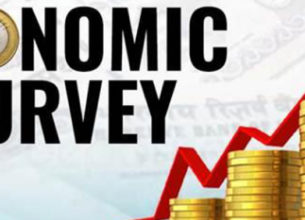Step up agri-spending, boost farm incomes
10, Feb 2022

Prelims level : Economics
Mains level : AOI, Food and Agriculture Organization, Union Budget
Why in News?
- While the overall budgetary allocation towards the agricultural sector has marginally increased by 4.4% in the Union Budget 2022-23, the rate of increase is lower than the current inflation rate of 5.5%-6%.
India’s low spending in Agriculture:
- The Food and Agriculture Organization (FAO) of the United Nations (UN) report for 2001 to 2019 shows that, globally, India is among the top 10 countries in terms of government spending in agriculture, constituting a share of around 7.3% of its total government expenditure.
- However, India lags behind several low-income countries such as Malawi (18%), Mali (12.4%), Bhutan (12%), Nepal (8%), as well as upper middle-income countries such as Guyana (10.3%) and China (9.6%).
- Low Budgetary Allocation:
- 1. Low allocation for important schemes
- A closer look at the budgetary allocation towards the agricultural sector shows that there has been a drastic slashing of funds toward important schemes such as crop insurance and minimum support price (MSP).
- Even with an overall increase in budgetary outlays, the allocation towards Market Intervention Scheme and Price Support Scheme (MIS-PSS) was only ₹1,500 crore.
- This is 62% less than the previous allocation of ₹3,959.61 crore in revised estimates (RE) of FY 2021-22.
- Similarly, the Pradhan Mantri Annadata Aay SanraksHan Abhiyan (PM-AASHA) was allocated just ₹1 crore for the year as against an expenditure of ₹400 crore in 2021-22.
- Both schemes are pertinent to ensure MSP-based procurement operations in the country, especially for pulses and oil seeds.
- 2. Low capital investment
- Capital investment in the agricultural sector is more crucial than price support programmes.
- However, there has not been any considerable and commensurate increase in the allocation towards capital investment, especially for promotion of rural infrastructure and marketing facilities.
- The allocation of funds towards schemes such as Pradhan Mantri Kisan Samman Nidhi (PM KISAN), Pradhan Mantri Kisan Maandhan Yojana, though desirable, will not result in long run asset generation.
Agriculture Orientation Index (AOI):
- It measures the ratio between government spending towards the agricultural sector and the sector’s contribution to GDP.
- AOI was developed as part of the Goal 2 (Zero Hunger) of the 2030 Agenda for Sustainable Development in 2015.
- What low AOI indicates: India’s index is one of the lowest, reflecting that the spending towards the agricultural sector is not commensurate with the sector’s contribution towards GDP.
- India holds only the 38th rank in the world.
- Although the AOI has shown an improvement since the mid-2000s, as part of the general revival that took place in several middle-income countries, India’s AOI is one of the lowest in Asia and among several other middle-income and upper-income countries.
- Low crop yield in India:
- The enormous spending on the agricultural sector by East Asian countries is also reflected in their higher crop yield.
- For example, the total cereal yield in India is only around 3,282 kilograms per hectare compared to 4,225 kg per hectare in Asia.
- In China, even with an average landholding size of 0.6 hectares, which is much lower than India’s average landholding size, the performance of the sector in terms of crop yield is much higher than India.
Way Forward:
- The focus on development of irrigation facilities, urban Infrastructure and development of national highways must be complemented with an emphasis on the Development of rural infrastructure and rural transportation facilities, along with an increase in the number of markets, as suggested by the National Commission on Farmers.









